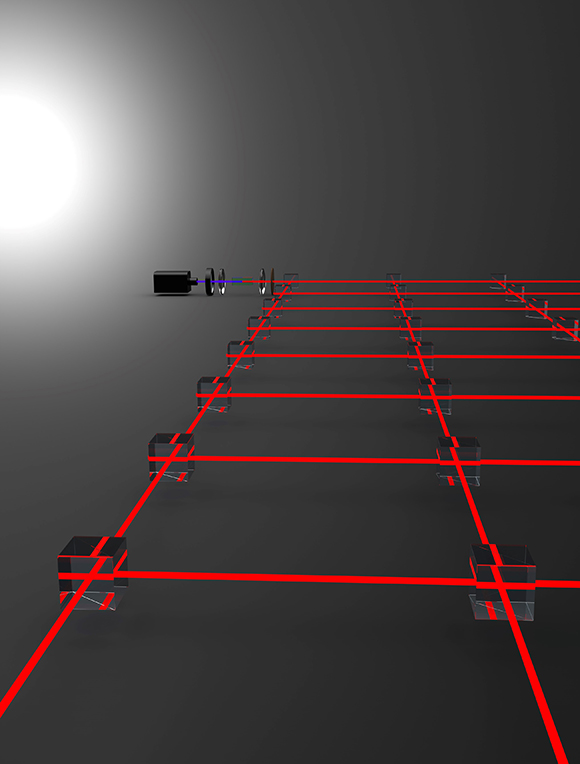Quantum walks, the counterpart of classical random walk, have essential differences between its classical one. There are many examples of classical random walks, such as Galton board and Brownian motion. In classical random walk, it is probability that superposed in the walk process, but it is amplitude in corresponding quantum walks. The probability distribution of walkers of these two kinds of walks is fundamentally different. In particular, the diffusion velocity of quantum walks is quadratic enhancement of spreading than classical random walks. In the contribution of these unique characters, quantum walks have been applied in quantum information process, quantum computation and other various areas.
However, the quantum states cannot be manipulated easily, the stability of experimental system and the coherence of quantum state cannot be kept for a long time. These difficulties make the experimental implementation of quantum walks very challenging. Therefore, a lot of physical systems have been explored to realize quantum walks to overcome the problem of controllability, such as trapped atoms, trapped ions and photonic systems. On the other hand, when photons walk in the structure of fiber or waveguide, the coherence of photons can also be preserved for walking a large number of steps. As these various realizations of quantum walks, the applications of quantum walks have been explored in many fields.
Quantum walks have been realized in a lot of physical systems. The applications of photonic quantum walks are particularly highlighted. Since photons have multiple degrees of freedom that can be controlled flexibly, photonic quantum walks offer excellent performance such as high degree of flexibility, expandability and integration when coding information with photons.
The team from Beijing computational science research center has been keeping the record of the longest steps of photonic quantum walks in free space, and has done a series of research work on quantum simulation, quantum measurement and verification of the basic principles of quantum mechanics. The team made a detailed summary of the implementation of photonic quantum walks on the basis of different degrees of freedom (such as polarization path and orbital angular momentum), as well as different experimental structures (such as linear optical crystals in a straight line, fiber loop and waveguide). Meanwhile the respective advantages and disadvantages were also compared. The results have been published in Chinese Optics Letters, Vol. 18, Issue 5, 2020 (Gaoyan Zhu, Lei Xiao, Bingzi Huo, Peng Xue. Photonic discrete-time quantum walks [Invited][J]. Chinese Optics Letters, 2020, 18(5): 052701).

Schematic diagram of photonics quantum walks experimental device
Professor Xue, leader of the team, said that there contain great application potentials of quantum walks. In the aspect of quantum information procession, quantum walks can act as a universal tool box for implementation of arbitrary two-dimension or higher-dimensional systems, single or multiple unitary/non-unitary evolutions, and quantum information processing.
In terms of quantum computing, quantum walks can be applied to develop big data search algorithm, differential evolution algorithm and Boson sampling algorithm. The multi-body non-unitary quantum walks can be explored for measurements of topological properties, based on which, topological quantum computation can be realized.
In the future, experimental research on photonic quantum walks will be mainly carried out in optical fiber structures and waveguide structures. These structures are easy to integrate and are the basis for the development and application of quantum processors.


